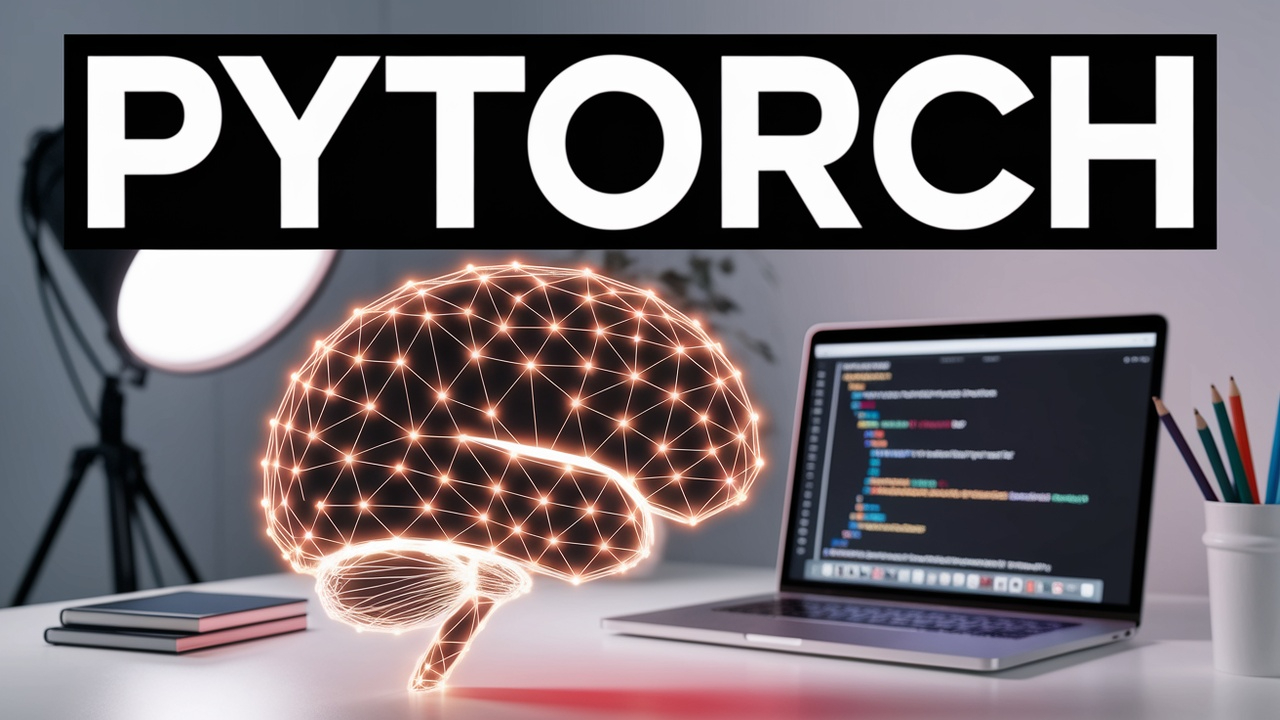
This comprehensive course introduces beginners to PyTorch, a powerful open-source machine learning library. Through a series of structured levels and topics, learners will gain hands-on experience in building neural networks, performing data manipulation, and understanding the fundamentals of deep learning.
Course Levels
-
Level 1: Introduction to PyTorch
In this level, students will familiarize themselves with PyTorch and its basic functionalities.
-
Level 2: Data Handling in PyTorch
This level focuses on data manipulation and loading techniques in PyTorch.
-
Level 3: Building Neural Networks
Students will learn how to construct and train neural networks using PyTorch.
-
Level 4: Advanced Model Training
This level delves into advanced training techniques and model evaluation.
-
Level 5: Convolutional Neural Networks (CNNs)
In this level, students will explore CNNs and their applications in image processing.
-
Level 6: Recurrent Neural Networks (RNNs)
This level covers RNNs and their use in sequential data processing.
-
Level 7: Deployment of PyTorch Models
Students will learn how to deploy PyTorch models for real-world applications.
-
Level 8: Real-World Projects
In the final level, students will work on real-world projects to solidify their understanding.
Course Topics
-
Introduction to Neural Networks
# Introduction to Neural Networks Neural networks are a cornerstone of modern artificial intelligence, particularly in deep learning. This section will introduce you to the fundamental concepts of ne...
-
Overfitting and Regularization
# Overfitting and Regularization In the realm of machine learning, overfitting is a common problem that occurs when a model learns not only the underlying patterns in the training data but also the n...
-
Creating a Simple Neural Network
# Creating a Simple Neural Network ## Introduction Neural networks are a set of algorithms modeled loosely after the human brain that are designed to recognize patterns. They interpret sensory data t...
-
Building a CNN Model
# Building a CNN Model in PyTorch Convolutional Neural Networks (CNNs) are a class of deep learning models that are particularly effective for image processing tasks. In this section, we will dive in...
-
Long Short-Term Memory (LSTM) Networks
# Long Short-Term Memory (LSTM) Networks LSTM networks are a type of recurrent neural network (RNN) architecture designed to effectively learn and remember long-term dependencies in sequential data. ...
-
Tensors: The Building Blocks
# Understanding Tensors in PyTorch In the realm of deep learning and machine learning, **tensors** are the fundamental building blocks. Tensors are a generalization of scalars, vectors, and matrices ...
-
Basic Tensor Operations
# Basic Tensor Operations In this section, we will explore the fundamental operations you can perform on tensors using PyTorch. Tensors are the core data structure in PyTorch, and understanding how t...
-
Datasets and DataLoaders
# Datasets and DataLoaders in PyTorch In the PyTorch ecosystem, efficient data handling is crucial for training machine learning models. PyTorch provides a robust framework for managing datasets and ...
-
Best Practices for Deployment
# Best Practices for Deployment Deploying PyTorch models effectively is crucial for ensuring that your machine learning applications run smoothly in production environments. This section highlights t...
-
End-to-End Model Deployment Project
# End-to-End Model Deployment Project In this section, we will explore the complete workflow of deploying a machine learning model built with PyTorch. Deployment is a crucial step that transforms you...
-
Training the Model
# Training the Model In this section, we will delve into the process of training a neural network model using PyTorch. Training a model involves adjusting its weights and biases through optimization ...
-
Working with Custom Datasets
# Working with Custom Datasets in PyTorch In this section, we will explore how to create and work with custom datasets in PyTorch. Custom datasets are crucial when you want to use your own data for t...
-
What is PyTorch?
# What is PyTorch? PyTorch is an open-source machine learning library developed by Facebook's AI Research lab. It provides a flexible and dynamic computational graph, making it an excellent choice fo...
-
Pooling Layers and Their Importance
# Pooling Layers and Their Importance In Convolutional Neural Networks (CNNs), pooling layers play a crucial role in down-sampling feature maps produced by convolutional layers. They help in reducing...
-
Creating REST APIs for Models
# Creating REST APIs for Models In this section, we will cover how to create REST APIs for your machine learning models using Flask, a lightweight web framework in Python. Creating a RESTful API allo...
-
Understanding Batch Processing
# Understanding Batch Processing Batch processing is a crucial concept in machine learning and data handling, particularly when using frameworks like PyTorch. In this section, we will explore what ba...
-
Transformations and Preprocessing
# Transformations and Preprocessing in PyTorch Data preprocessing is an essential step in the machine learning pipeline. In PyTorch, transformations help prepare and augment datasets to improve model...
-
Evaluating RNN Performance
# Evaluating RNN Performance Recurrent Neural Networks (RNNs) are powerful tools for sequence data, but evaluating their performance is crucial for ensuring they meet the requirements of specific tas...
-
Time Series Forecasting Project
# Time Series Forecasting Project Time series forecasting is a crucial analytical technique used to predict future values based on previously observed values. In this project, we will explore how to ...
-
Installing PyTorch
# Installing PyTorch Installing PyTorch is the first step towards leveraging its powerful capabilities for deep learning and machine learning tasks. In this section, we will walk you through the proc...
- And 20 more topics...